Scott #290 is part of the 1898 Trans-Mississippi Exposition Issue, a commemorative series created to coincide with the exposition held in Omaha, Nebraska.
The series was intended to illustrate themes of settlement, agriculture, exploration, and the challenges associated with western expansion. The 10-cent denomination carried the title “Hardships of Emigration,” and its subject matter underscored the difficulties faced by pioneers traveling westward. This denomination had a distinct postal purpose, designed to meet higher domestic and international rates rather than everyday correspondence.
Within the nine-stamp set, Scott #290 stands out for its emphasis on the burdens of migration, balancing the series’ broader portrayal of progress and development with the realities of frontier life.
Design & Print
The Bureau of Engraving and Printing, the sole producer of U.S. postage stamps by this period, printed Scott #290 in 1898. It was executed in gray violet ink, a deliberate choice that distinguished it from other values in the series. The vignette depicts a covered wagon with a family traveling westward, the design emphasizing both the human and logistical challenges of emigration.
The engraving was produced with intricate detail, capturing the strain of the figures, animals, and wagon against a stark background. Inscriptions include “United States of America” across the top and “Ten Cents” spelled out at the base. Production quantities were determined by postal demand for 10-cent rates, which were less commonly used than standard letter values but necessary for international correspondence and higher-rate services.
The Bureau’s engravers applied precise linework, consistent with the high technical standards of late nineteenth-century U.S. stamp production.
Postal Usage
The 10-cent denomination filled a critical role in the postal system of 1898. Under Universal Postal Union agreements, the rate for heavier foreign mail often required 10 cents, either as a standalone franking or in combination with other values. Domestically, the 10-cent stamp was used for heavier parcels, multiple-ounce letters, or registered letters where additional fees were required.
Its issuance reflected the postal department’s need to provide practical denominations across the rate structure rather than focusing exclusively on the most commonly used values. At the time, the basic domestic first-class rate was two cents per ounce, meaning the 10-cent denomination covered specific multi-ounce weight steps or higher-tier services.
Its place within the Trans-Mississippi series demonstrated the careful alignment of commemorative design with the practical requirements of the postal system.
Identification
Scott #290 is identified by its gray violet color and its distinctive vignette titled “Hardships of Emigration.” The engraving depicts a wagon train scene with family members and animals, which is unique to this denomination within the series.
The inscription “Ten Cents” is spelled out at the bottom rather than expressed numerically, consistent with the series’ stylistic conventions. The stamp was perforated at gauge 12, standard for Bureau of Engraving and Printing issues of the period. Specialists focus on the quality of the detailed linework, particularly in the wagon wheels, figures, and shading of the scene, to confirm authenticity.
When compared to other values in the Trans-Mississippi set, Scott #290 is distinct not only in its imagery but also in its gray violet color, which sets it apart from the blues, browns, and oranges assigned to other denominations. These elements make it identifiable within the larger commemorative issue and ensure it can be distinguished from the other stamps in the 1898 series.
It’s design was reissued in 1998 commemorating the 100 year anniversary of the Trans-Mississippi stamp set. The 1998 issue can be distinguished by it’s bi-color printing where the vignette is black, versus the 1898 issue was printed in one color.

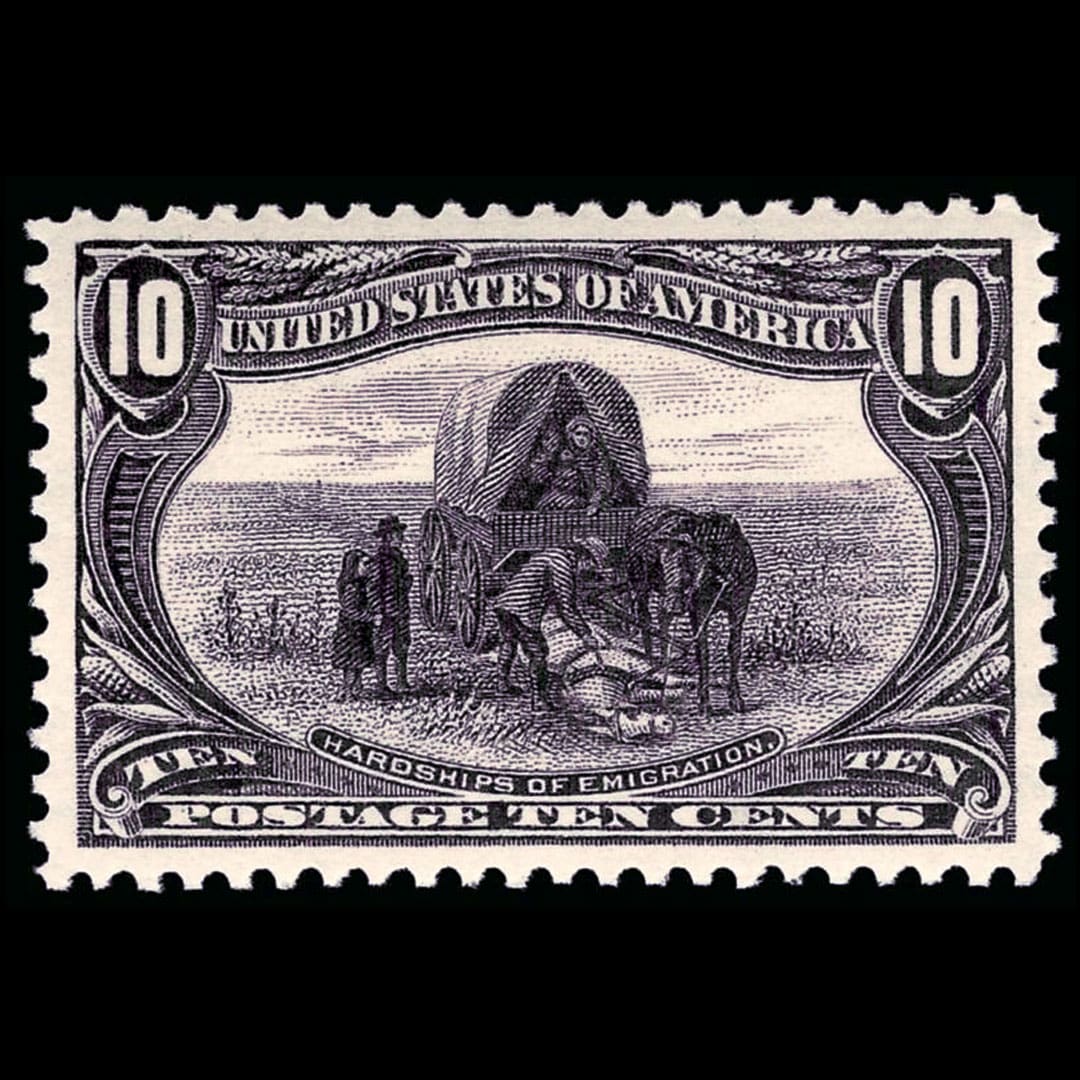

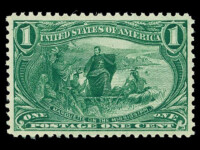
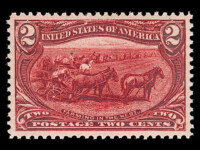



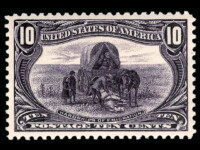

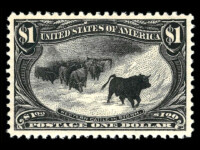













Ask A Question Or Leave A Comment